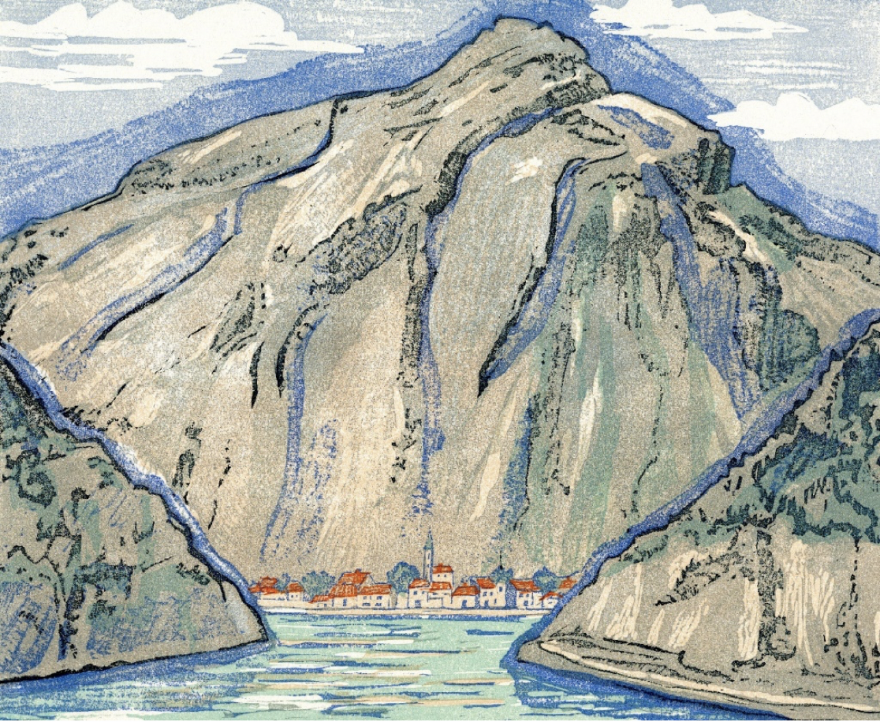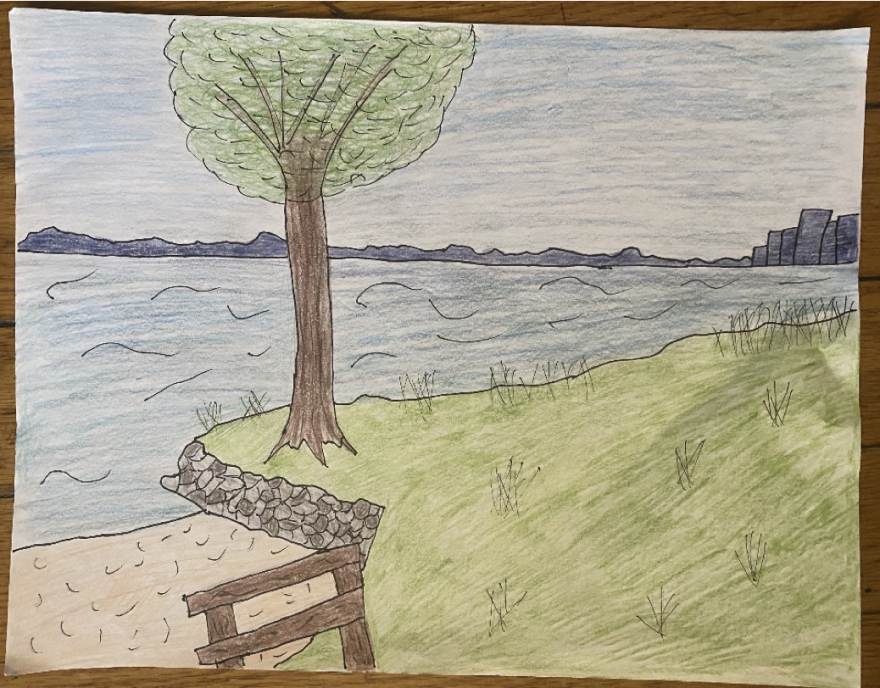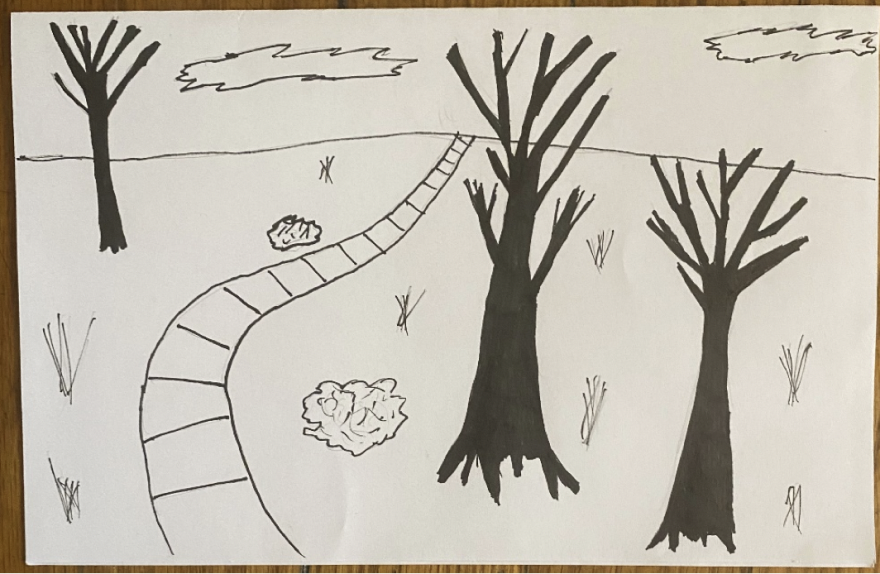Activity Guide by Kate Kwasneski
Intern, Grinnell College Museum of Art
Look and Learn
Landscape art has been around as long as art itself. This type of art depicts the natural world, focusing on the ground and sky as well as trees, mountains, and water. These kinds of art typically do not include people or animals, and tend not to include buildings or man-made structures at all. The two most famous types of landscape painting were developed in Europe and in Asia. Today we are going to look at some landscape paintings in the Grinnell College Museum of Art’s collection!
Landscape painting and drawing often includes an element of perspective, where parts of the landscape that are farther away are drawn smaller to seem like they are in the distance. You can check out our activity guide on one-point perspective if you would like to use perspective in your landscape drawing.
This landscape focuses on a large mountain in the background. The small buildings give the sense that the mountain is far away from the viewer. What emotions does this scene make you feel? What do you think is happening at the base of the mountain?
This landscape, by Paula Modersohn-Becker, is more sketch-like than the previous one. You can see the individual lines that make up the leaves on the trees and the blades of grass. This landscape is monochrome, but you can still imagine the place where it is set. What do you think of this landscape?
This landscape is Japanese, from a different artistic tradition than the other landscapes we have seen. It is a woodblock print. You can see that this type of landscape is flatter than most European landscapes, with less emphasis on perspective and more emphasis on the shapes themselves. What do you see when you look at this artwork? How does it make you feel?
This landscape is much more abstract than the previous ones. At first it is not recognizable as a landscape, but if you look closer you can see the wheat in the foreground and the clouds in the sky. What do you think about this piece? Do you like it more or less than more ‘traditional’ landscapes?
Create
Now it’s time to create your own landscape! You can draw a place that you know, or you can make up a completely new place. When you are choosing a place to draw, think about what you will choose to depict. Where will the horizon be? What is the weather like? What different kinds of plants are there? What time of day is it?
When I drew a landscape, I chose a park near where I live. I decided that I would draw the park in the spring, on an overcast day.
You can also make a landscape entirely in black and white, or just in pencil. I used black and white to show a winter landscape with trees that have no leaves, and the black made my landscape look spookier and more dramatic.
Write
Tell a story of something that happened in your landscape! Think about what would happen if a person visited there. Or maybe some animals live there! Tell their story.






